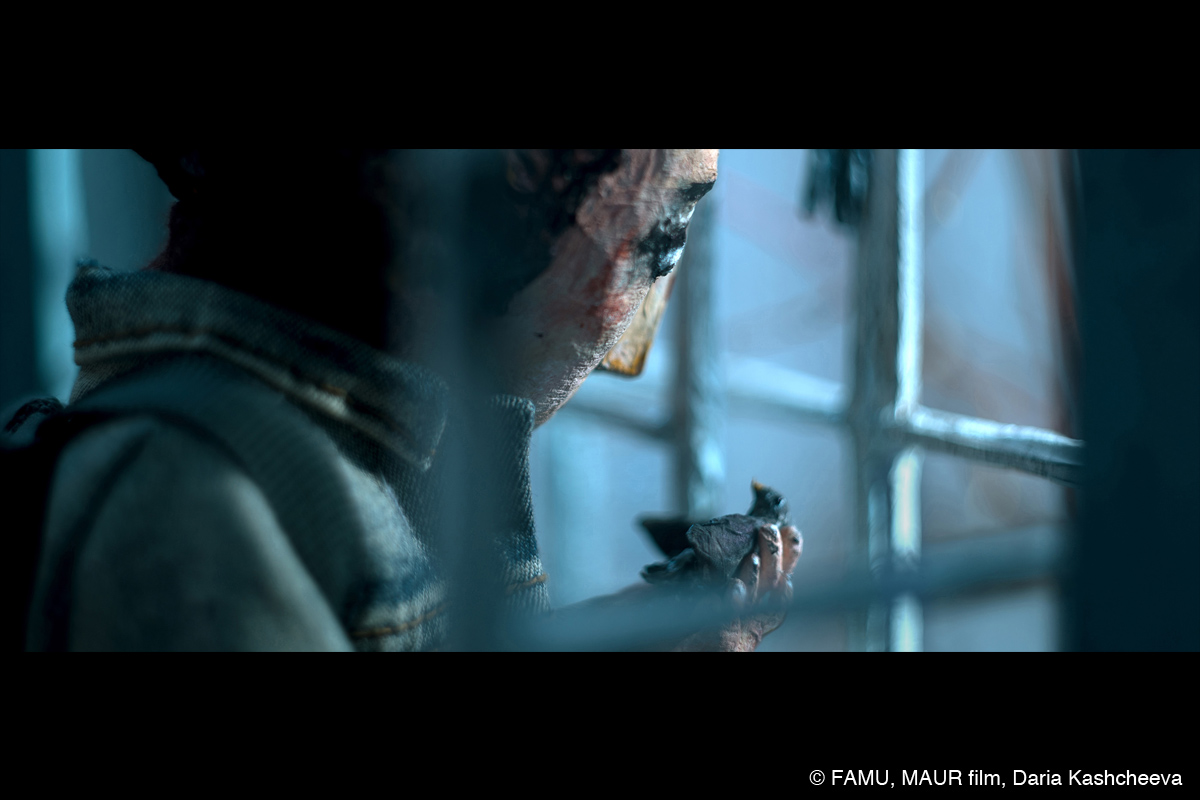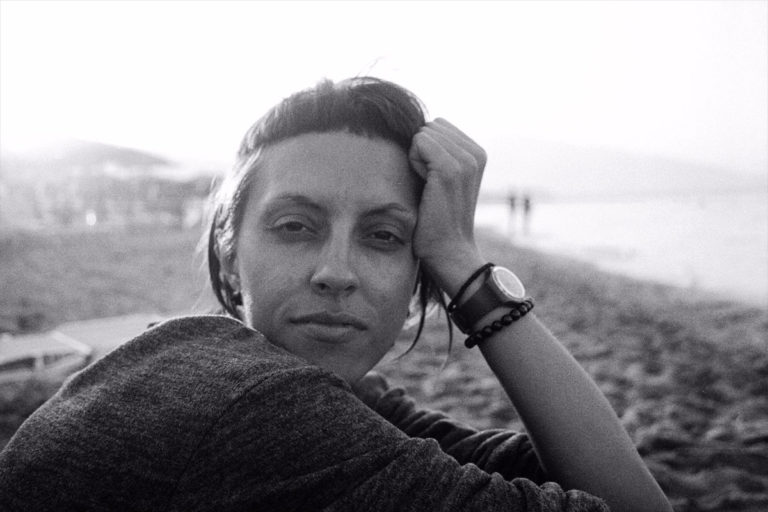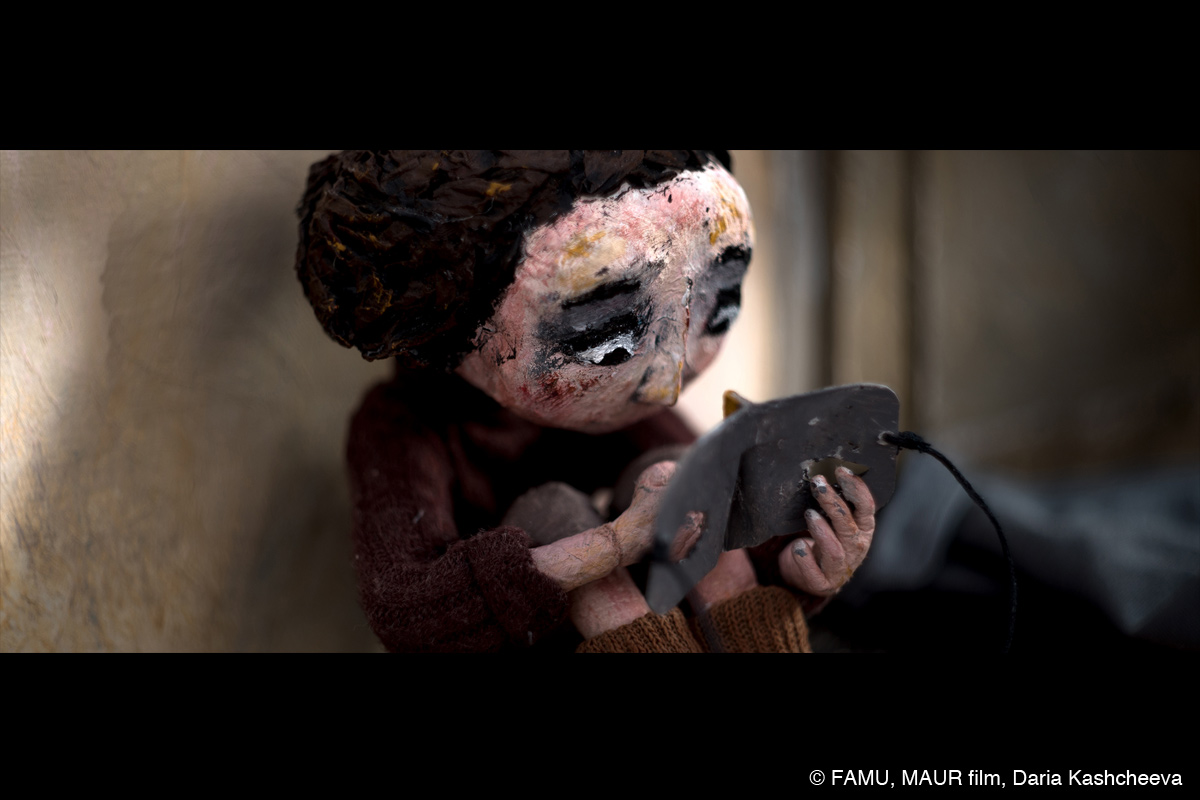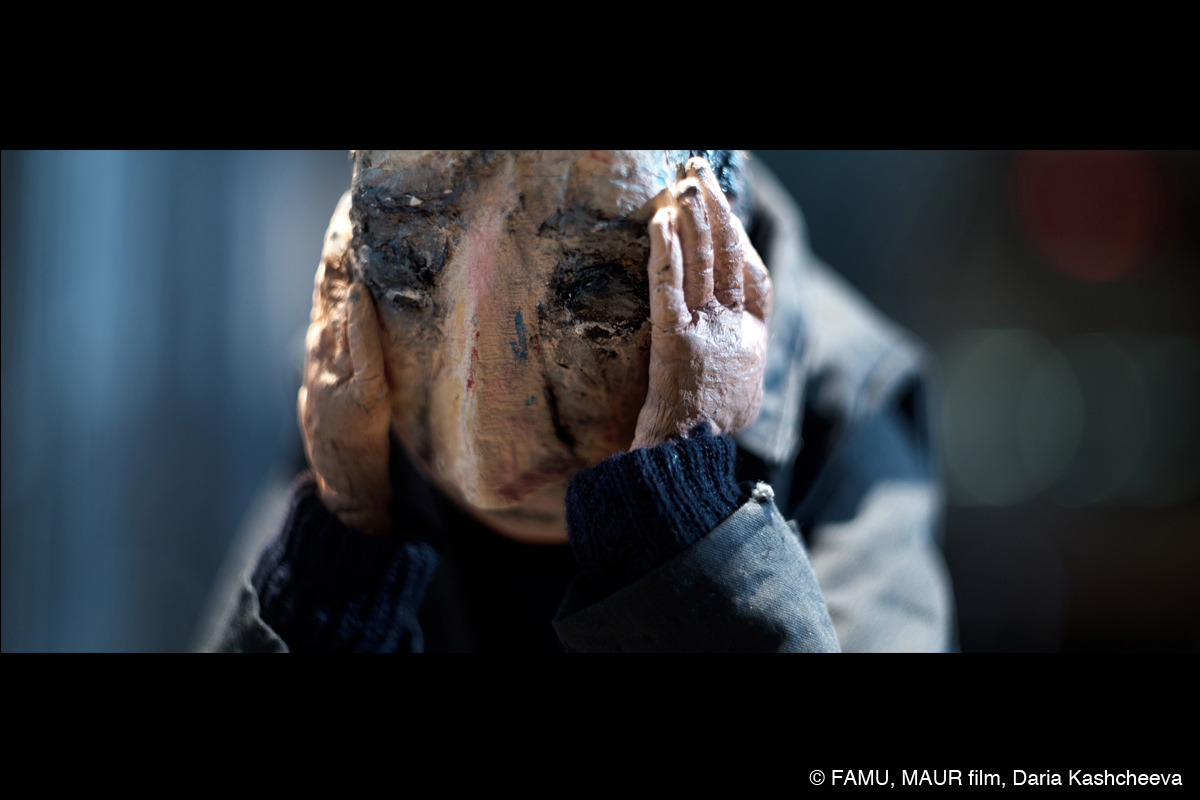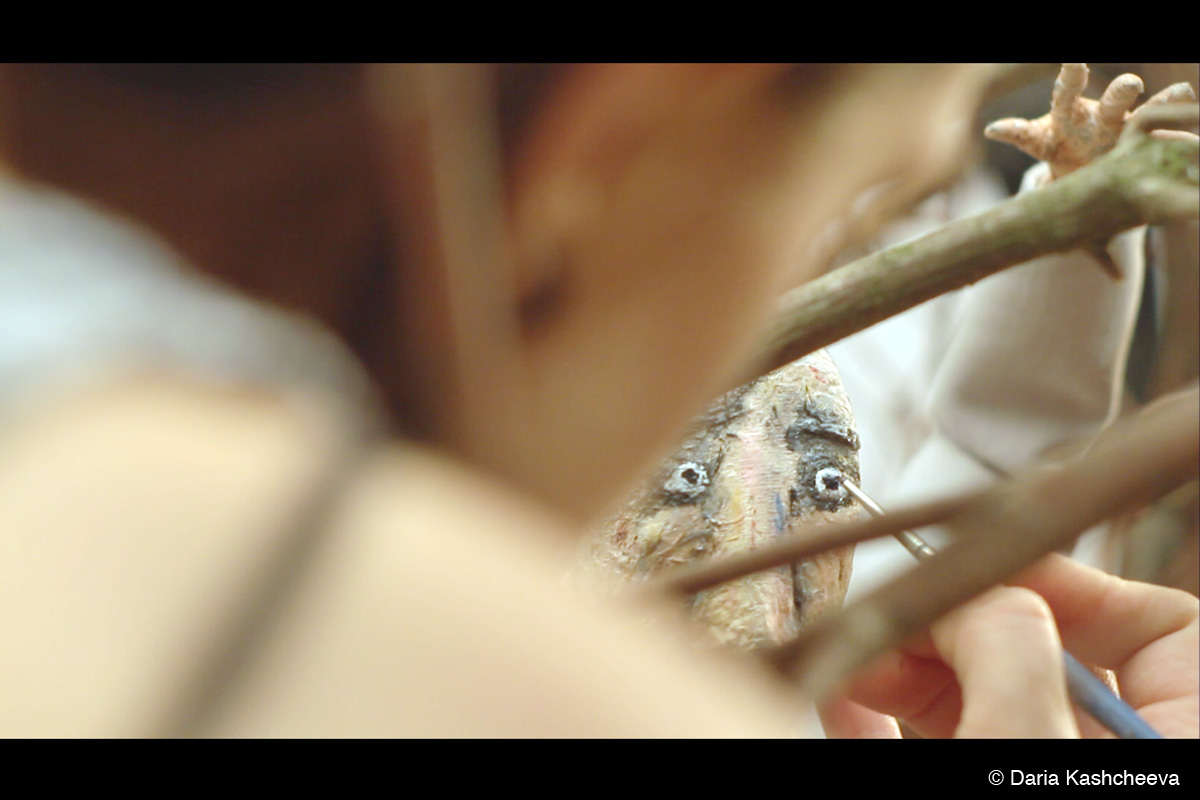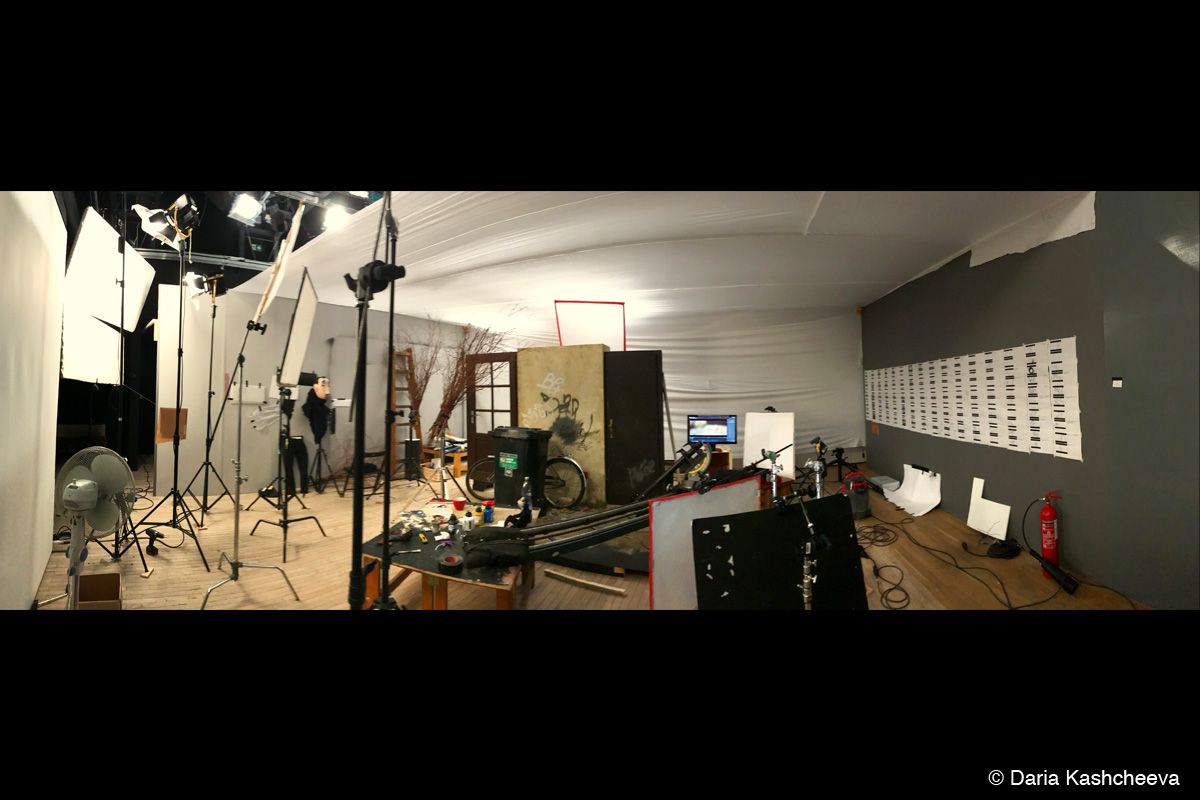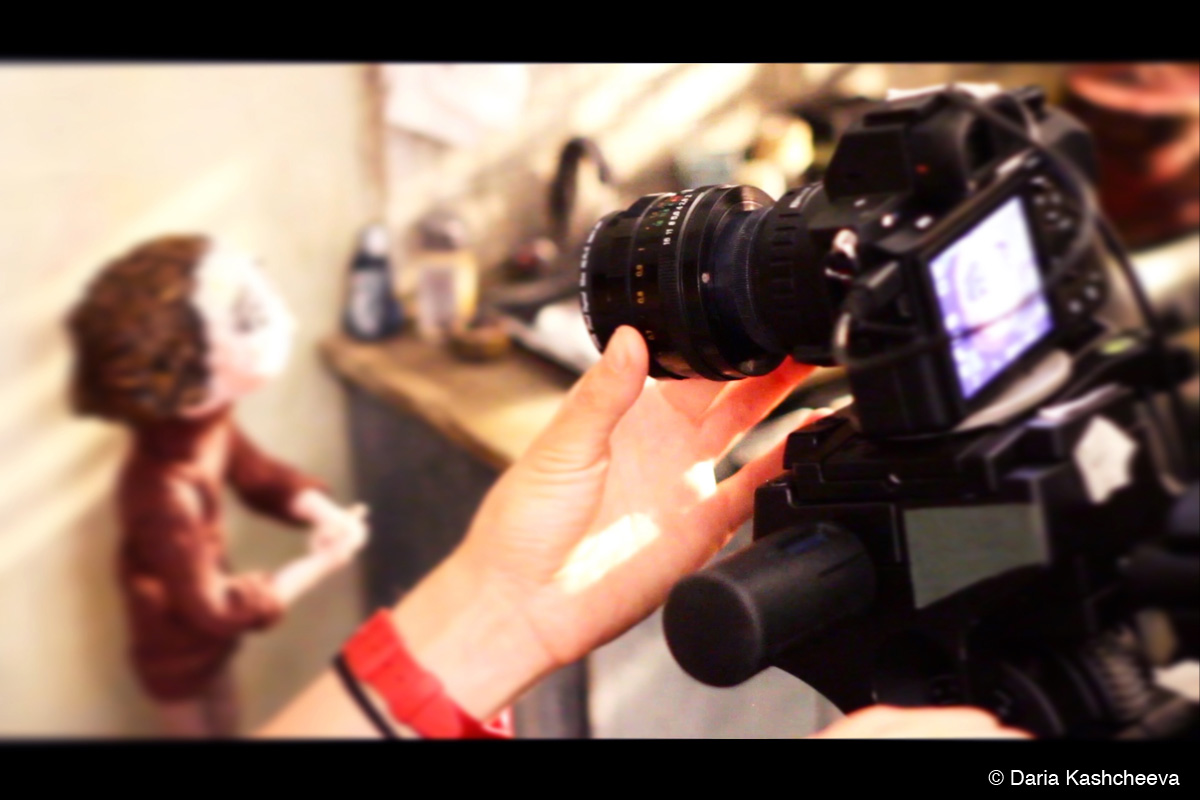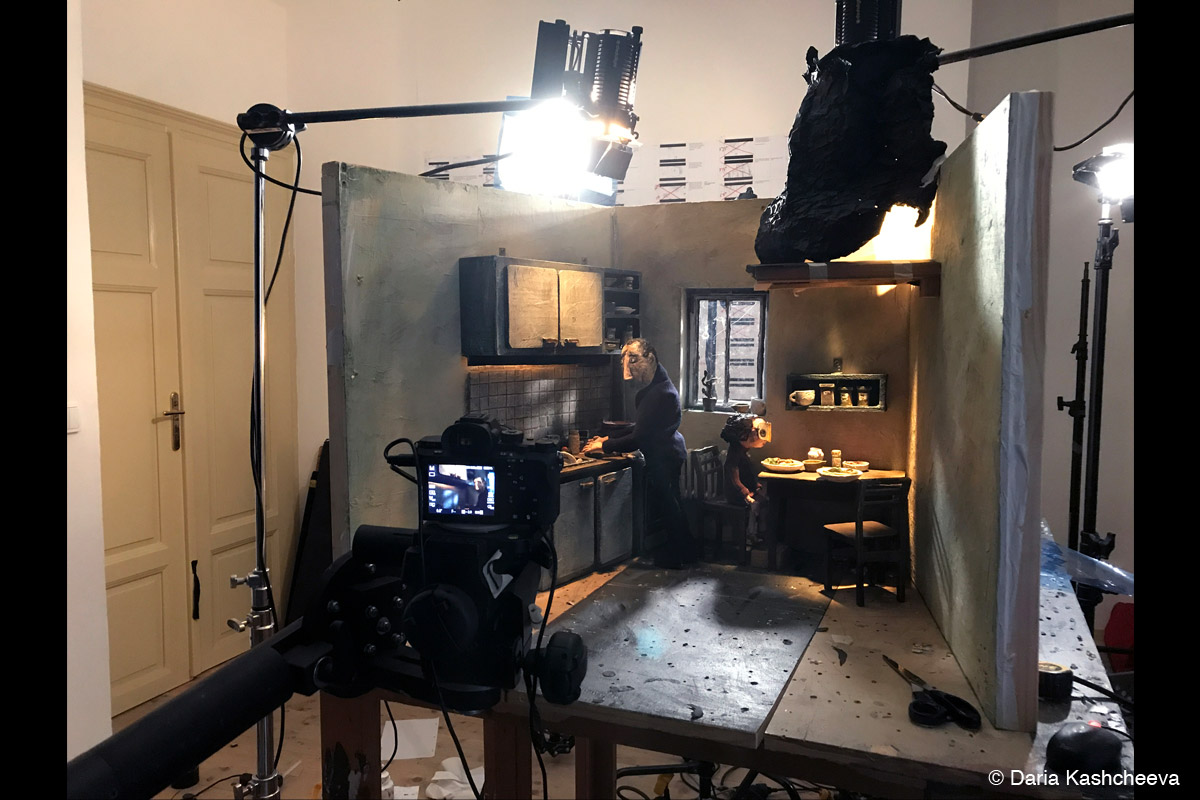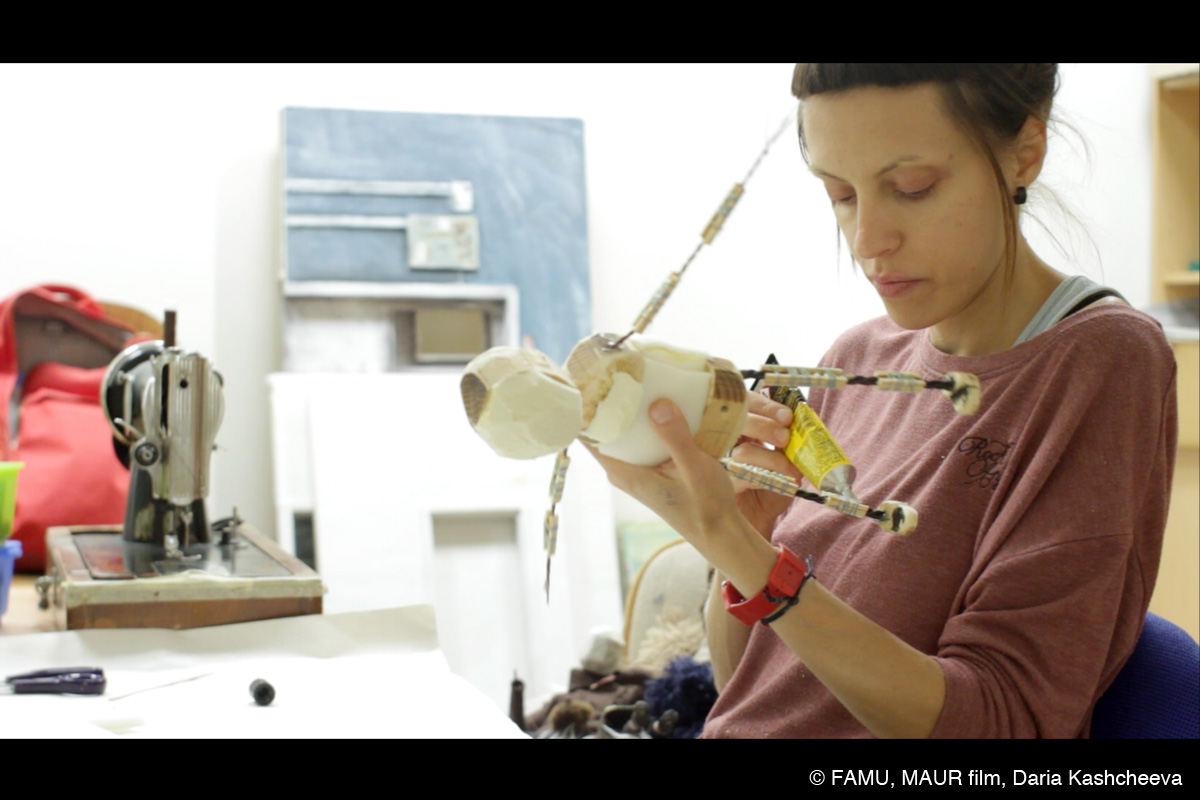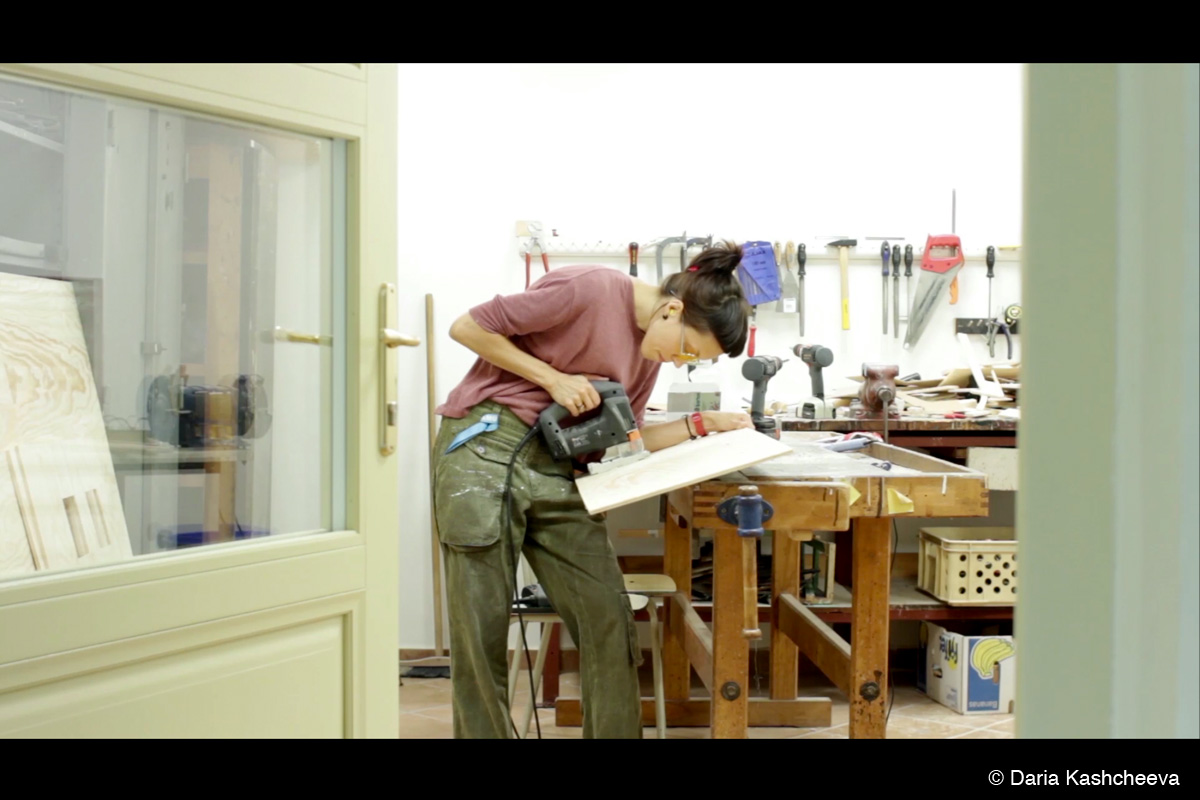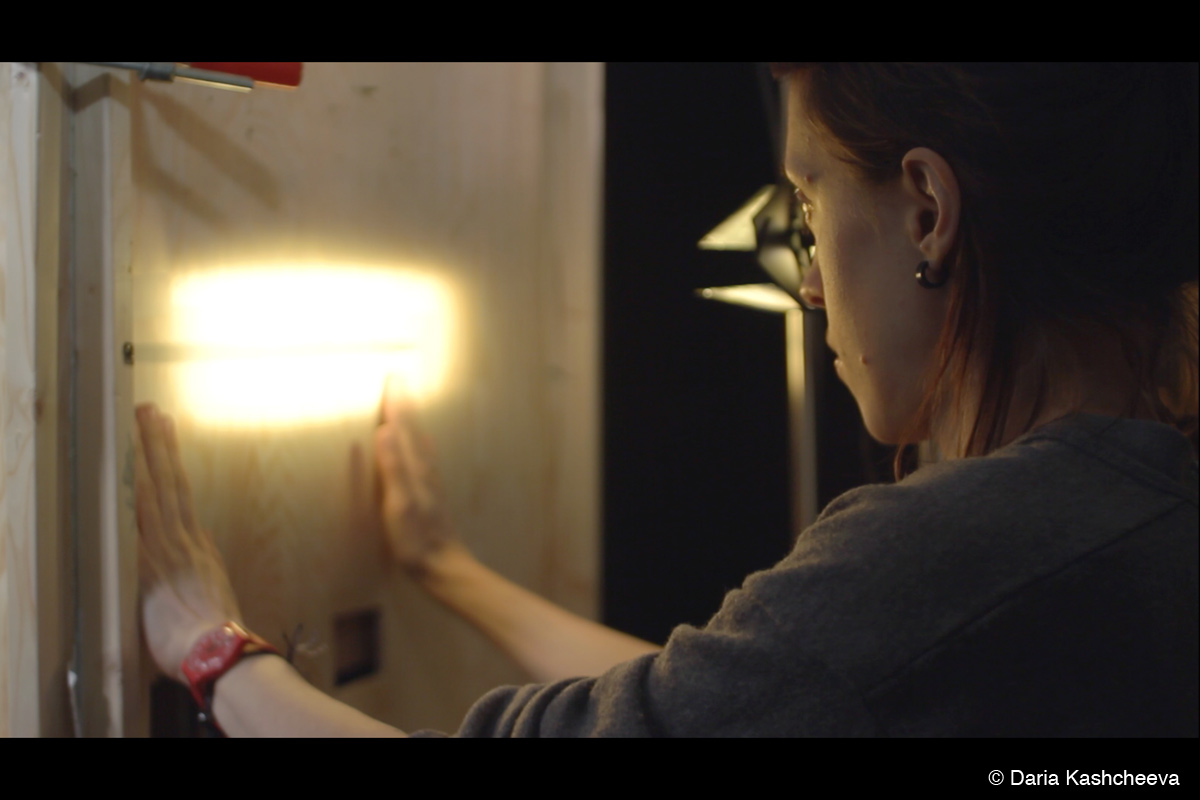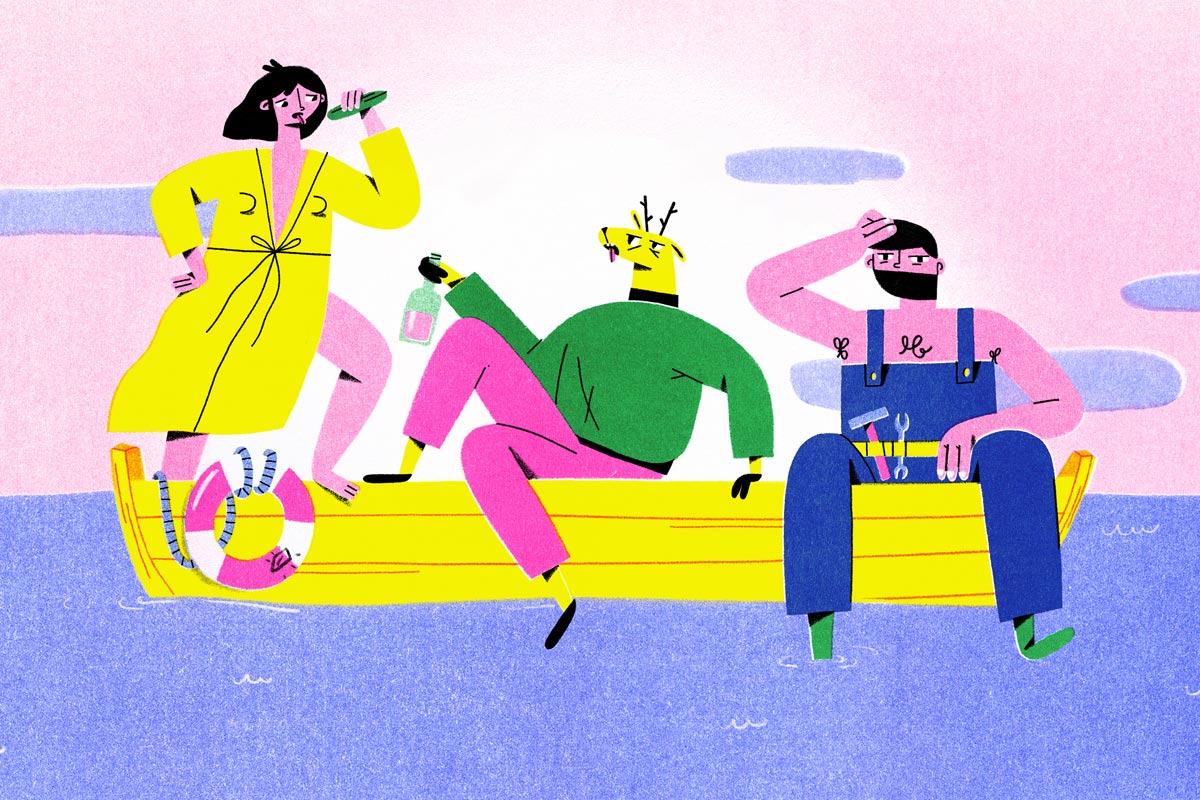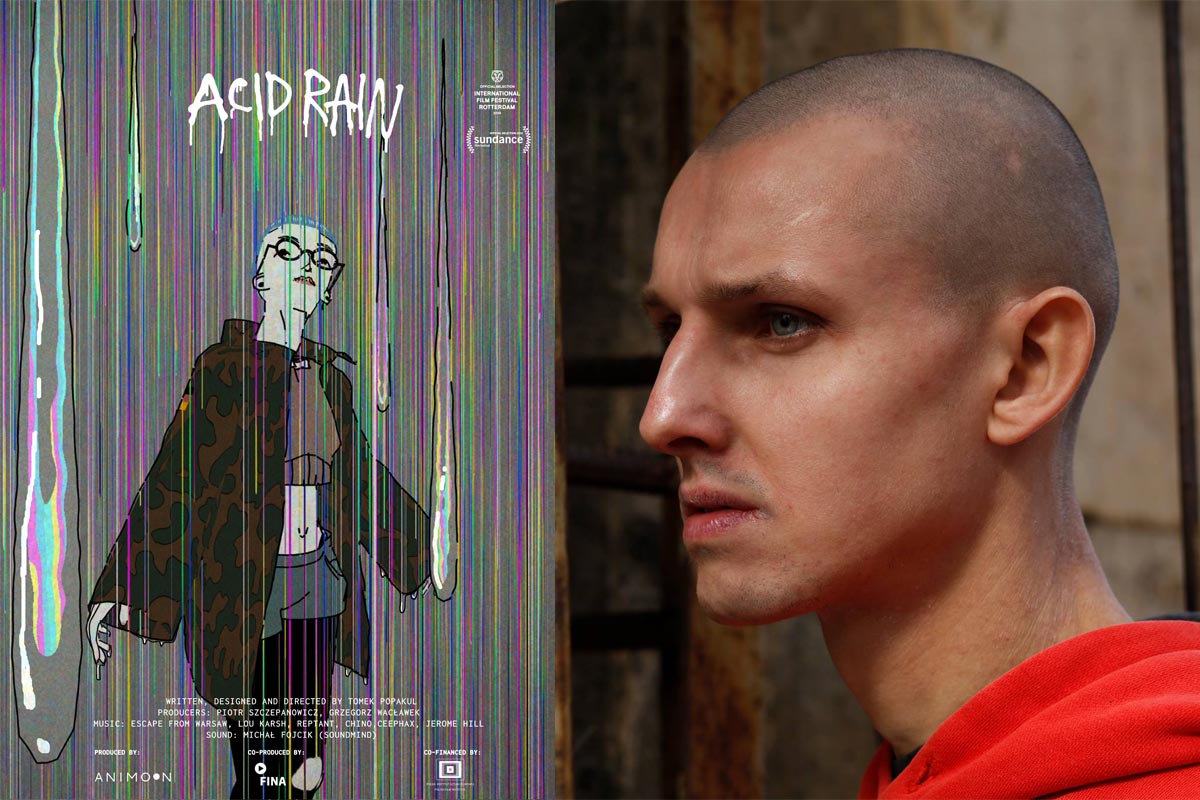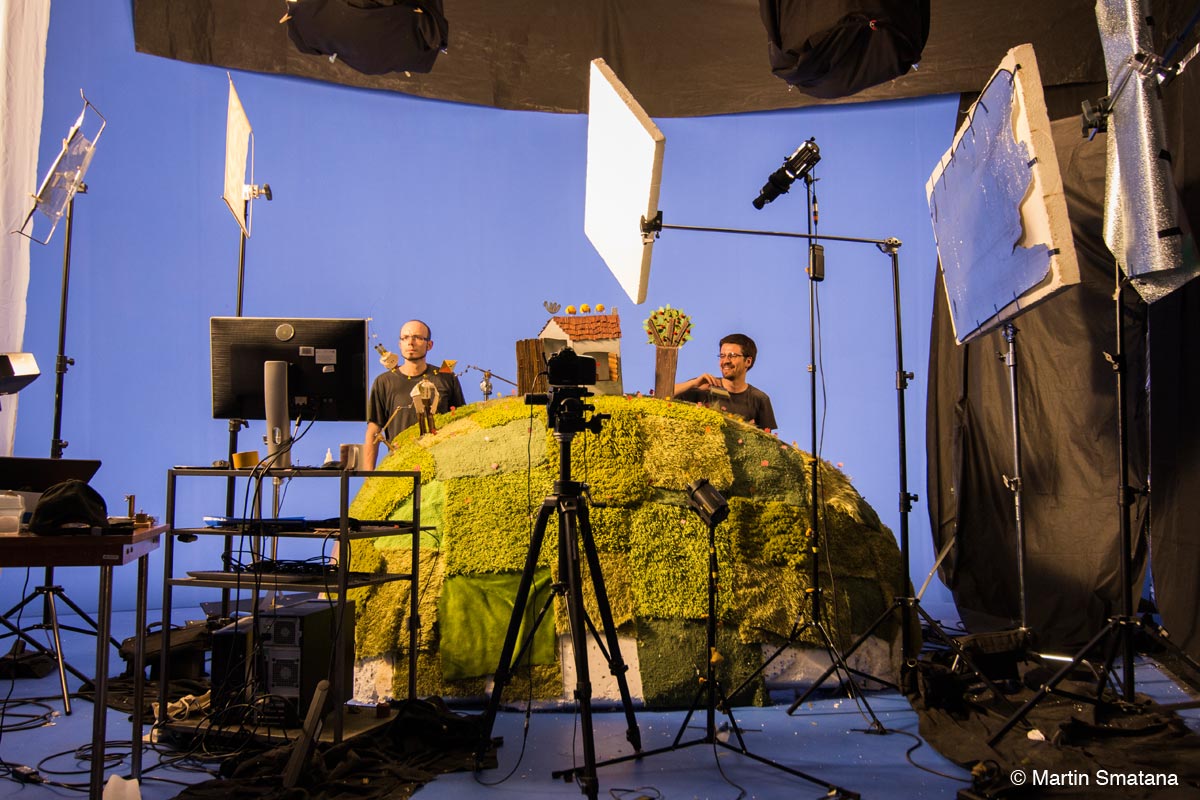This is part of an interview series, in collaboration with CEE Animation. We would like to introduce award-winning animated short films directed by upcoming young creators from the Central and Eastern Europe (CEE) region and the story behind the creation of each film. We give big thanks to Aneta Ozorek and Marta Jallageas for their great support in this series.
Daughter
Synopsis
In a hospital room, the Daughter recalls a childhood moment when as a little girl she tried to share her experience with an injured bird with her Father. A moment of misunderstanding and a lost embrace has stretched into many years all the way to this hospital room, until the moment when a window pane breaks under the impact of a little bird.
Film Credits
Director: Daria Kashcheeva
Author: Daria Kashcheeva
Art Director: Daria Kashcheeva
Animator: Daria Kashcheeva
Producer: Zuzana Roháčová (FAMU, Czech Republic)
Co-producer: Martin Vandas (MAUR film, Czech Republic)
Editor: Alexander Kashcheev
Music: Petr Vrba
We are delighted to deliver our interview with Daria Kashcheeva, who studied animation at FAMU in Prague, Czech Republic, on her graduation work titled Daughter. The film won many prestigious awards, including the Gold Medal in International Animation film category at the 46th Student Academy Award, Cristal for the Best Student Film at Annecy International Animated Film Festival 2019, City Post Award for Best Animation Short Film at Melbourne International Film Festival 2019, and Best film of Fantoche at Fantoche International Animation Film Festival 2019, just to name a few.
Daughter is a no-dialogue stop-motion short with exceptionally high standards for a student film. It tells a story of a father and daughter who grew emotionally apart due to a small event, or so it seems. The look of the film is very uniquely designed: Its polished unique visuals of the universe, sophisticated camera work and well-structured story guides you into the ordeal of misconstruing each other among a family, which could happen to us in everyday life no matter how much love there is between one another.
Interview with Daria Kashcheeva
Hideki Nagaishi (HN): This film is telling a story of relationship between a daughter and her father, which includes its difficulties, growing apart, misunderstandings and affection, through a sensitive depiction of their emotional movement. Where did the initial idea of the story come from and what made you decide to develop the film?
Daria Kashcheeva: I had been carrying the idea for the animated drama Daughter in my head for three years, before I actually started making it. I wrote it for the entrance exams for FAMU in Prague, and I wrote it in just a few days. Before I came up with the topic of the parent-child relationship, I had been pondering other subjects. I was trying to write and invent witty or unrealistic tales, but it was all futile and driving me crazy.
So, I then decided to write about myself, and I started to drag up memories and feelings deep down in the past that bothered me. I was searching for answers to why I am the way I am. While processing these childhood memories, I found moments that really shook me and as I understood later, influenced my behaviour. And after all of this it was much easier to write up the subject of the movie, even though it was making me quite emotional and sometimes I cried.
I discovered that parents sometimes can’t express their love for their child, even though they do feel it inside. Or express it in such a way the child cannot understand. Sometimes there is estrangement. And after at the end of the 2nd year at FAMU, when I was thinking about the topic for my bachelor’s film, I decided to return to it.
HN: The characters’ emotional expressions, especially the facial expressions in this film, were impressive. What were the things you took care of in designing and creating the models and animating them?
Daria Kashcheeva: As the story is very emotional, I understood that the facial expression is so important in my film. I knew I wanted to use papier-mâché as a material for my puppets and I couldn’t find a way to animate eyes. I didn’t want to use balls inside the puppets heads as it is usual in puppet animation, because it seemed so artificial on the papier-mâché head.
As I painted on the puppets’ faces, I decided to try animating eyes by repainting directly on the puppets’ faces. I animated just the movement of the pupil. I was adding a touch of black on one side towards where the pupil was moving, and painting over with white on the other side. With each wink I covered the whole eye in black, and after drying I repainted the whole open eye including the pupil. In between takes I had to remove the accumulated layers of paint from the previous shots.
In animation, especially with big details, I was using video reference. I filmed myself, then frame by frame transferred the motion of my eyes onto the puppet face. During testing of the facial expression animation, I confirmed that I should have bigger puppets with bigger heads, on which I could paint the movement of the eyes more comfortably. That’s why I decided that for the movie I need puppets that are about 40cm for the father, 37cm for the adult daughter and 26cm for the little girl.
HN: I felt that all the background art, music and sounds of each scene made it possible for the audience to see and feel the emotion of the daughter and father intuitively. How did you design the background art, music and sounds for the film to achieve the complex synchronization and harmony between the story of the film and the two main characters?
Daria Kashcheeva: Actually, that is true. Everything I do, I make it intuitive, just like how I feel. I like painting, I was very inspired by the paintings of Egon Schiele, with his very expressive style, so I decided to paint all the sets and puppets’ faces. It was a very creative and expressive process.
With the music and sound, I wanted to create a documentary-like atmosphere, rough and deliberately “dirty”. I was trying to emphasize cuts with the sound, and especially jump-cuts. That is why I didn’t want to have a lot of music in the film. We used music-like noises and decided to have only one simple theme, which is representing the father-daughter love.
HN: The transitions of each scene guided me to understanding and allows me to follow their emotions easily. Could you please let us know what things did you take care of in developing the structure of the story?
Daria Kashcheeva: I like the advantage animation gives in using transitions and transformations, which allows connecting the scenes using metaphors and associations. When I wrote the script, I consciously figured out how this advantage could help me tell the story and show the characters’ emotions or thoughts. For example, the transition I used in the scene, when the girl falls down through the nest from her room to her dream, and afterwards she appears back in her room embracing a wall instead of her father, this scene was written I believe in the first version of the script. This transition helped me show her emotions and longing. It helped me show that it was her dream, something unreal.
We also worked with the structure in the editing room, when the animation was completed. We knew from the script that we wanted to use a flashback in prologue, but in the editing room we decided to add another flashback by bringing a part of the hospital scene to the middle of the film. It allowed us to remind the viewers that the whole story is a memory. It also allowed the second part of the memories to be shown through the father’s perspective, as the second flashback grows from his mind.
HN: I came across some impressive camera work, which really made me feel the daughter’s emotions, such as zooming in on her, strongly defocusing the background, and subtle vibrations. Could you please let us know your aim of effects from the camera works throughout the film?
Daria Kashcheeva: I have always admired the work of the camera operator, with the movement of the camera, the use of light and depth-of-field. I am a film buff and often visit film festivals.
In summer 2017, when I was thinking intensely about my bachelor’s movie, I spent a week at the Karlovy Vary Film Festival. During one projection, I thought, “what if I used a hand-held camera in my animated movie?” The idea sounded crazy at first, I couldn’t imagine at all how I would do it, but at the same time I found this idea inspiring, I felt that dramatically it would work perfectly! I wanted to make the documentary-like atmosphere using the camera movement as well to draw viewer deeper into the story. I tried to create the feeling that there is a cinematographer behind the character. The cinematographer is a curious observer, but he is also quite shy and doesn’t get his camera too close to the character. This imaginary cinematographer is closeby, but always behind or on one side of the character, never being in front of.
I also deliberately created delays with the camera movement when the puppet has made any movement to give the feeling that the cinematographer cannot know what will happen, as he is observing the situation right now and there. I think this helps viewers identify with the cinematographer and to feel themselves more involved to the story. As for defocusing and the small depth of field, it helped me to concentrate the viewers’ attention more towards the characters and their emotions, but not on the space around them. That is why I also used mostly close ups.
HN: I would like to hear how you’ve encountered stop-motion animation and the reason you chose stop-motion as your way of telling stories.
Daria Kashcheeva: I hate to work in front of computer all the day. I like to move, to work with my hands, to touch, to paint, to be dirty, to go to hardware stores and to come up with ideas on how to make furniture and props. It is so fun.
Also, I admire the work of the camera operator. I love to work with light, because the light could create such different atmospheres within the same set! In drawn animation, you could have all the animation under your control. But sometimes when I animate puppets, I feel that they control me. It is such a strange feeling, but the puppet becomes alive and tells you what it is going to do and how long this shot is going to be. This is the incredible miracle that I love so much.


